When the comfrey starts blooming it’s time to harvest! I so love the pretty purple flowers of the comfrey plant. When the comfrey produces a long stalk and flashes her blossoms its time to start cutting. Through out the season I do pick the big, broad leaves for infused oils, but it is that long stalk that I look for to dry. The stalk has a concentration of the healing compounds that comfrey is so well known for.
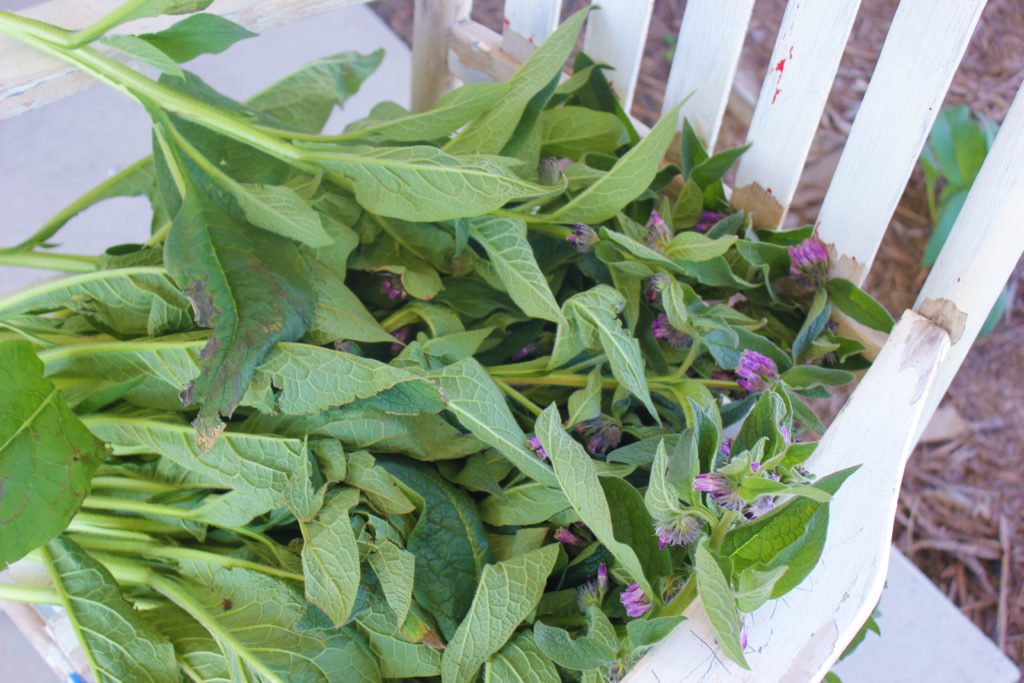
Comfrey-the-comforting, also known as knit-bone, strengthens and heals the bones, the skin, the ligaments, the tendons, and the mucus surfaces of the intestines, the lungs, the sinuses, the throat, the vagina, and the anus. It contains two alkaloid groups: alantoin and PAs. Alantoin is responsible for comfrey’s ability to heal any injury – from bedsores to vaginal tears, from lacerations to piercings, from abrasions to severe burns – quickly and thoroughly. Comfrey leaf infusion (not tea, not tincture, not capsules) is very high in protein, macro- and trace-minerals, and every vitamin needed for good health – with the exception of vitamin B12.
Drinking comfrey infusion has benefitted me in many ways: It keeps my bones strong and flexible. It strengthens my digestion and elimination. It keeps my lungs and respiratory tract healthy. It keeps my face wrinkle-free and my skin and scalp supple. And, please don’t forget, comfrey contains special proteins needed for the formation of short-term memory cells. Comfrey (Symphytum) leaf is free of the compounds (PAs) found in the root that can damage the liver. I have used comfrey leaf infusion regularly for decades with no liver problems, ditto for the group of people at the Henry Doubleday Research Foundation who have eaten cooked comfrey leaves as a vegetable for four generations. Comfrey is also known as “knitbone,” and no better ally for the woman with thin bones can be found.. Its soothing mucilage adds flexibility to joints, eyes, vagina, and lungs. Comfrey leaf infusion used internally and as a sitz bath is excellent at easing hemorrhoids .
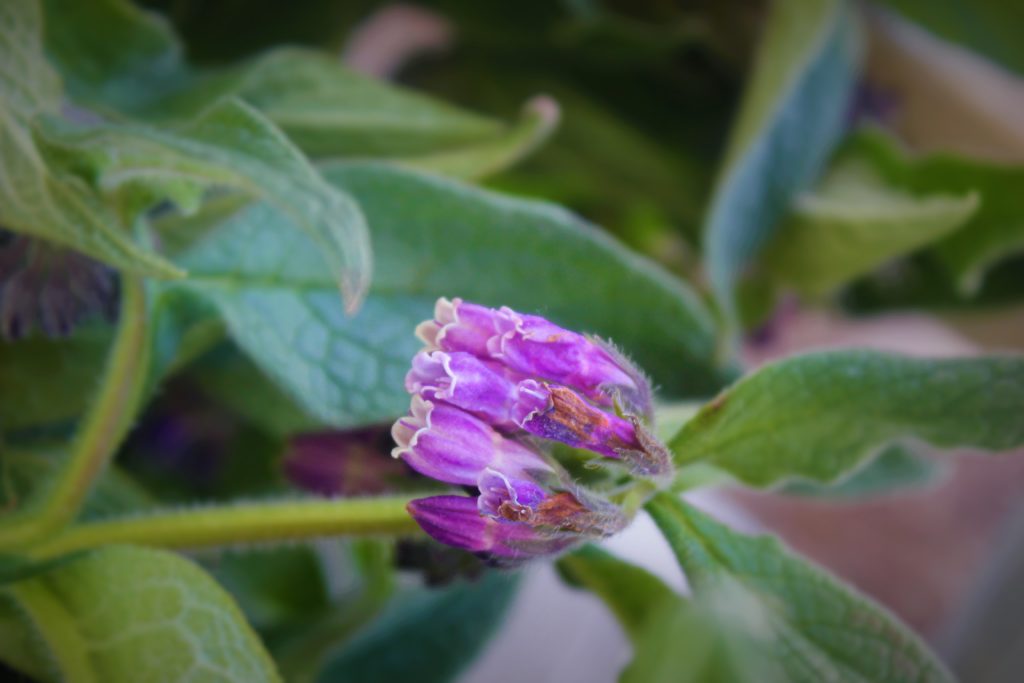 Comfrey is quite easy to dry, but there are some considerations. The leaves are quite big and hold a lot of moisture, therefore they need to be dried loosely. Typically a person will gather a large bunch of plant materials, tie it in a bundle and dry. This won’t work with comfrey, I have ruined many batches by doing it this way, the comfrey will mold, and we don’t want that. Instead I have found that it is just as easy to hang each stalk on a nail and it drys very quickly this way, with out the mold.
Comfrey is quite easy to dry, but there are some considerations. The leaves are quite big and hold a lot of moisture, therefore they need to be dried loosely. Typically a person will gather a large bunch of plant materials, tie it in a bundle and dry. This won’t work with comfrey, I have ruined many batches by doing it this way, the comfrey will mold, and we don’t want that. Instead I have found that it is just as easy to hang each stalk on a nail and it drys very quickly this way, with out the mold.
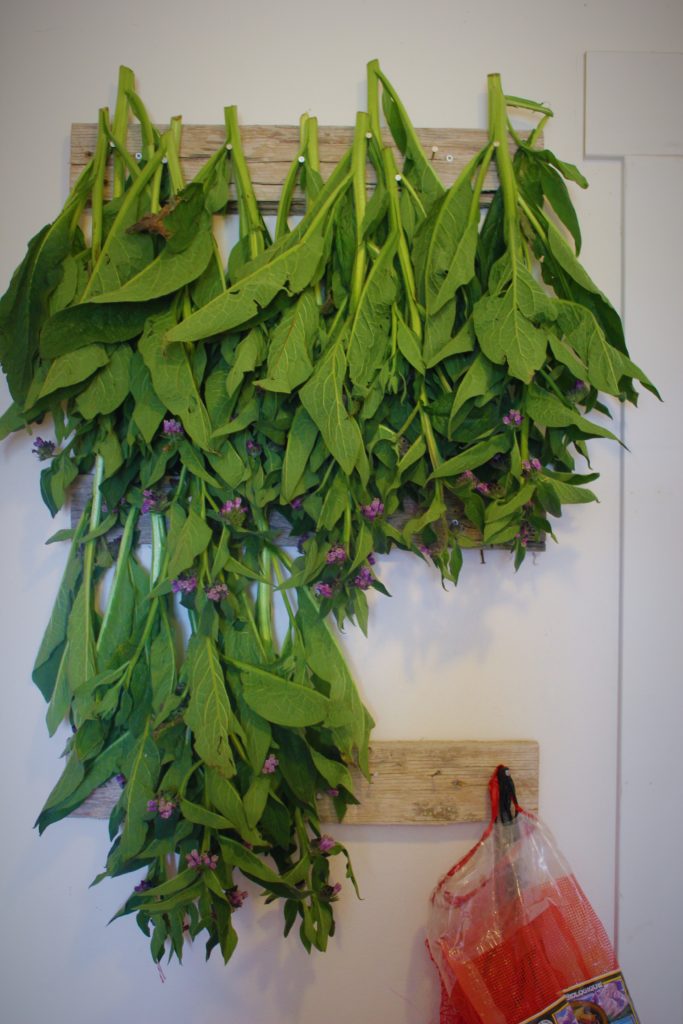
My herb drying racks, I love it when it is nice and full.
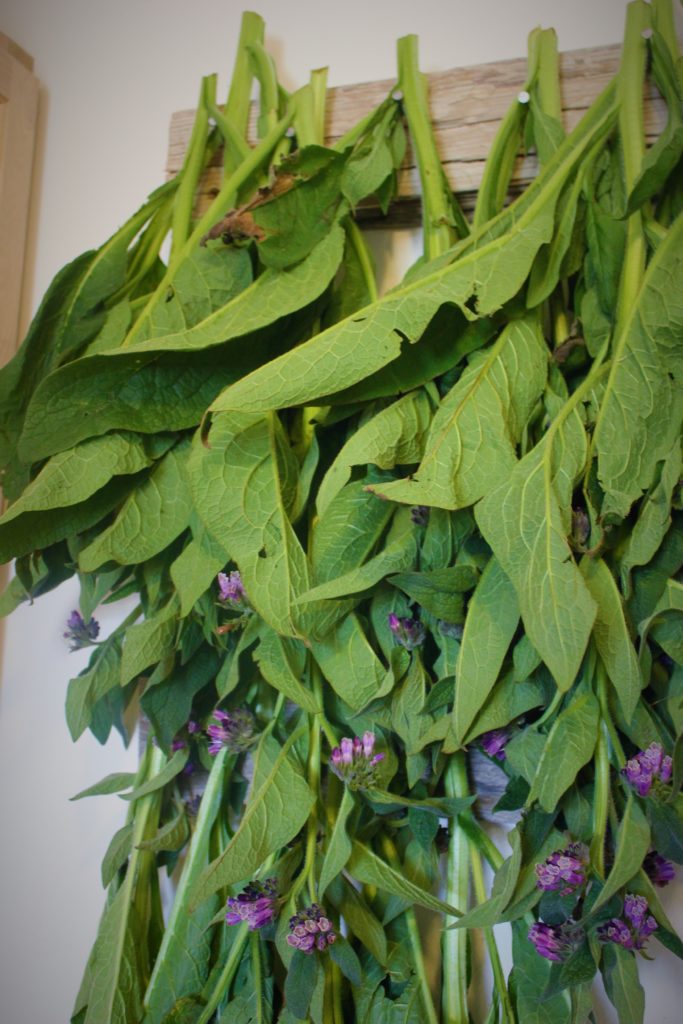
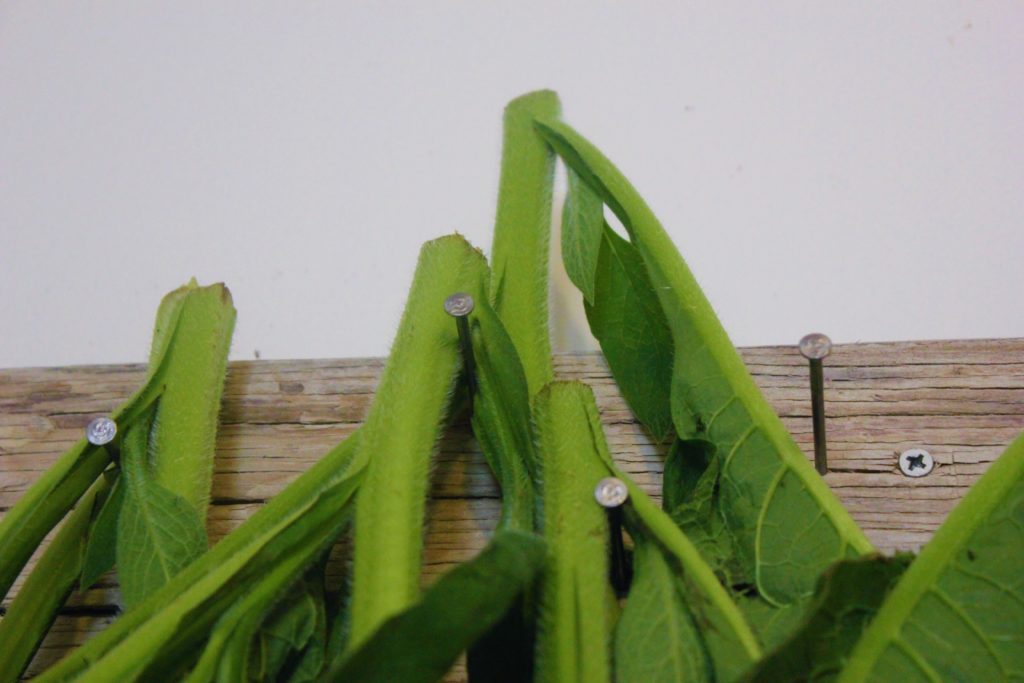 After a couple weeks the comfrey will be nice and dry. At this point I will chop it up and store it in brown bags in a dark dry place. The reason I use brown bags is so any moisture that is left can be wicked out, instead of growing mold. I will use this through out the year in herbal infusions and poultices. Comfrey is one of my favorites for the garden, and for the body.
After a couple weeks the comfrey will be nice and dry. At this point I will chop it up and store it in brown bags in a dark dry place. The reason I use brown bags is so any moisture that is left can be wicked out, instead of growing mold. I will use this through out the year in herbal infusions and poultices. Comfrey is one of my favorites for the garden, and for the body.
You can read more on Comfrey here: Comfrey

what do you do with the flower part?